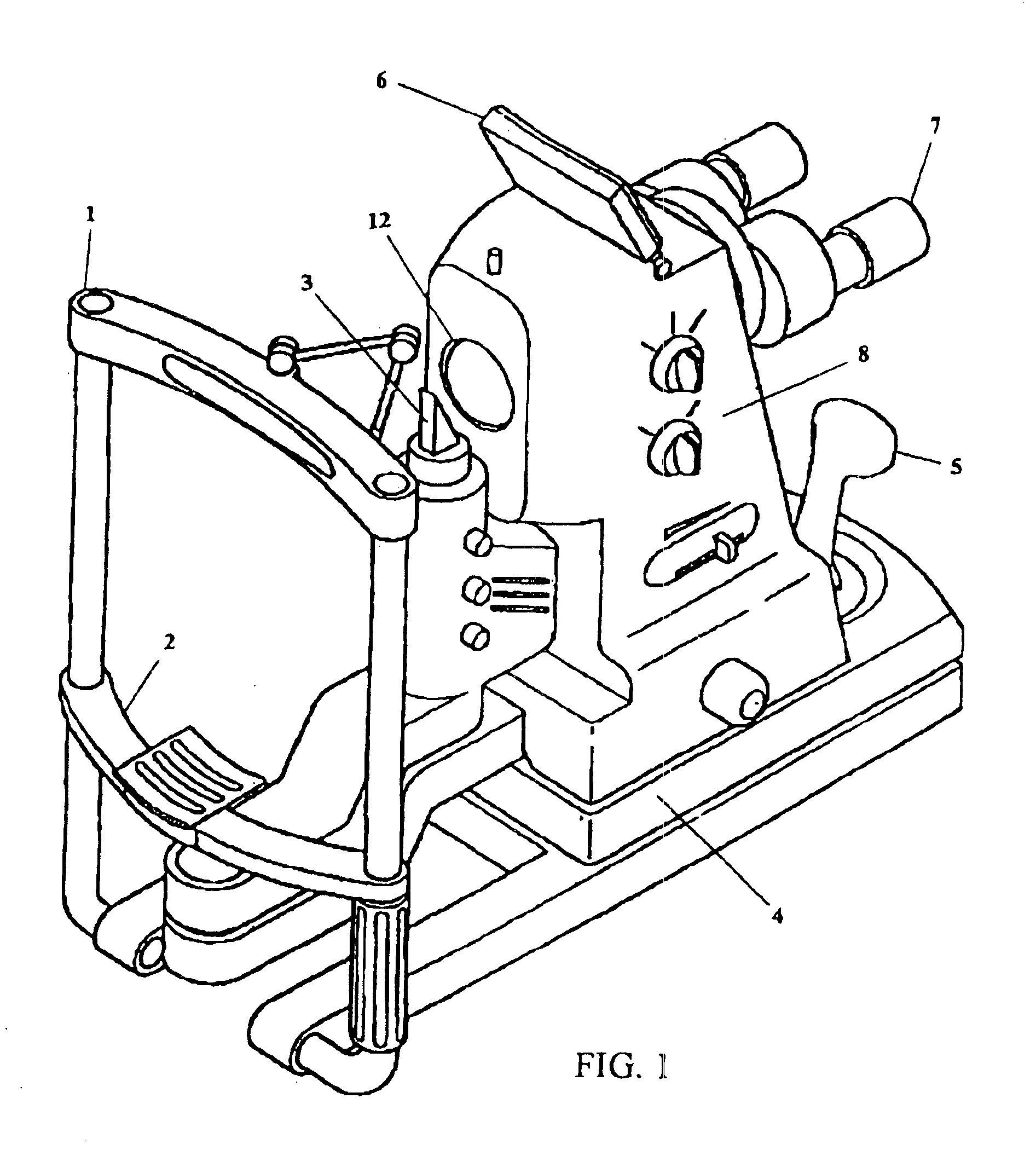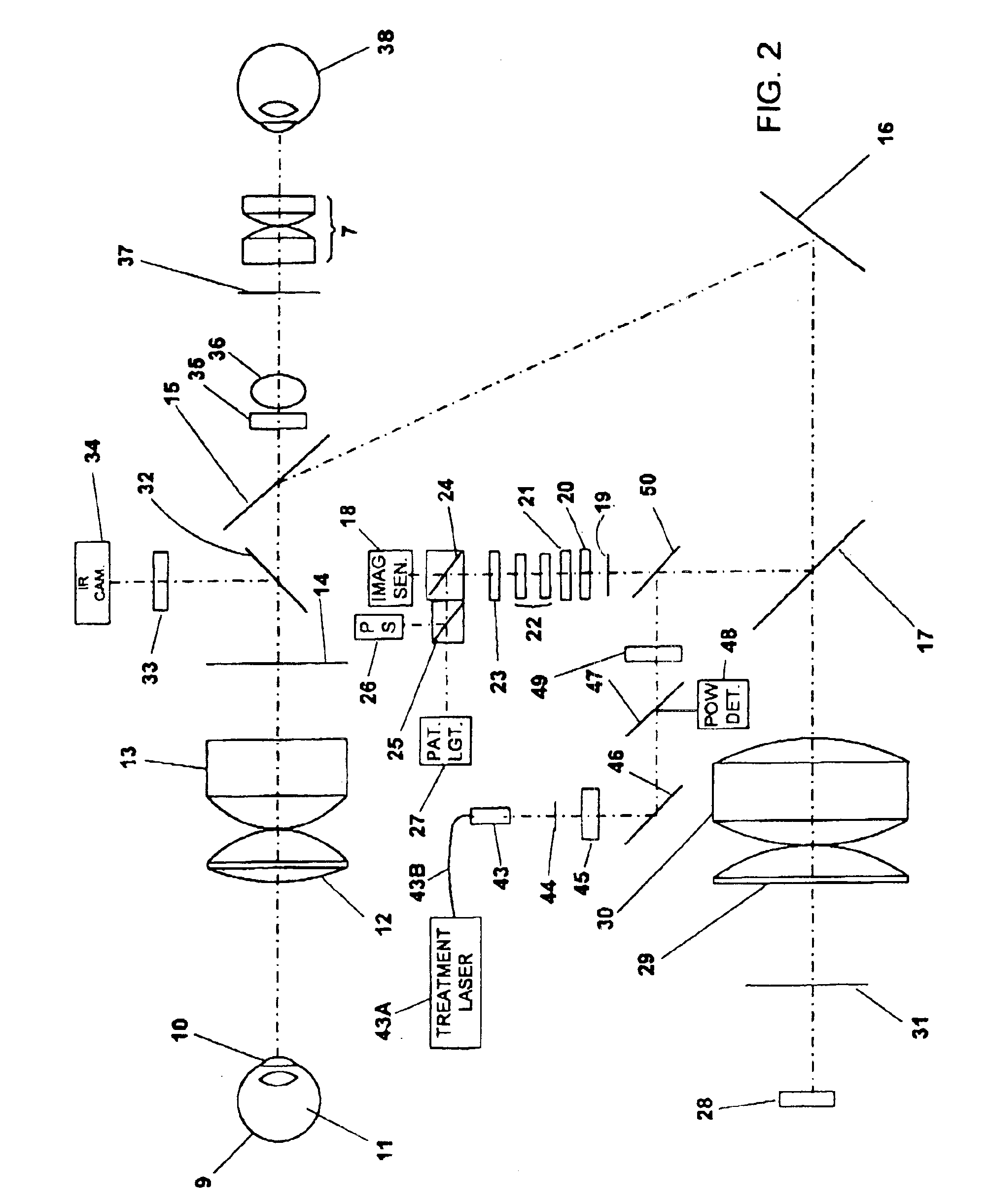Digital eye camera
a digital camera and eye technology, applied in the field of digital eye cameras, can solve the problems of large intra-observer variation, difficult assessment of these quantities, faulty examination or diagnosis, etc., and achieve the effect of reducing the stress on patients and clinicians
- Summary
- Abstract
- Description
- Claims
- Application Information
AI Technical Summary
Benefits of technology
Problems solved by technology
Method used
Image
Examples
first preferred embodiment external
Design
[0033]In FIG. 1 is shown the exterior design of a first preferred embodiment of the present invention. A typical headrest 1 and chin rest 2 is provided to stabilize the patient head. The slit lamp 3 provides illumination for examination of the cornea and is adjustable in brightness, color, and width of slit.
[0034]The base 4 provides the usual degrees of freedom in angular, transverse and longitudinal motion. Inside of the camera are means for adjusting the height of the camera potentially through a motorized system. Joystick 5 assists in controlling motion and has control switches for operation of the system. In FIG. 1, the joystick 5 is shown on base 4. Alternatively, the joystick S can be mounted on a portable base, and be placed on different position away from the base 4.
[0035]A small LCD display 6 can be used to display the image, especially a real-time infrared corneal image. However, the main image display is a larger monitor and is not shown. Oculars 7 are provided for ...
PUM
 Login to View More
Login to View More Abstract
Description
Claims
Application Information
 Login to View More
Login to View More - R&D
- Intellectual Property
- Life Sciences
- Materials
- Tech Scout
- Unparalleled Data Quality
- Higher Quality Content
- 60% Fewer Hallucinations
Browse by: Latest US Patents, China's latest patents, Technical Efficacy Thesaurus, Application Domain, Technology Topic, Popular Technical Reports.
© 2025 PatSnap. All rights reserved.Legal|Privacy policy|Modern Slavery Act Transparency Statement|Sitemap|About US| Contact US: help@patsnap.com



